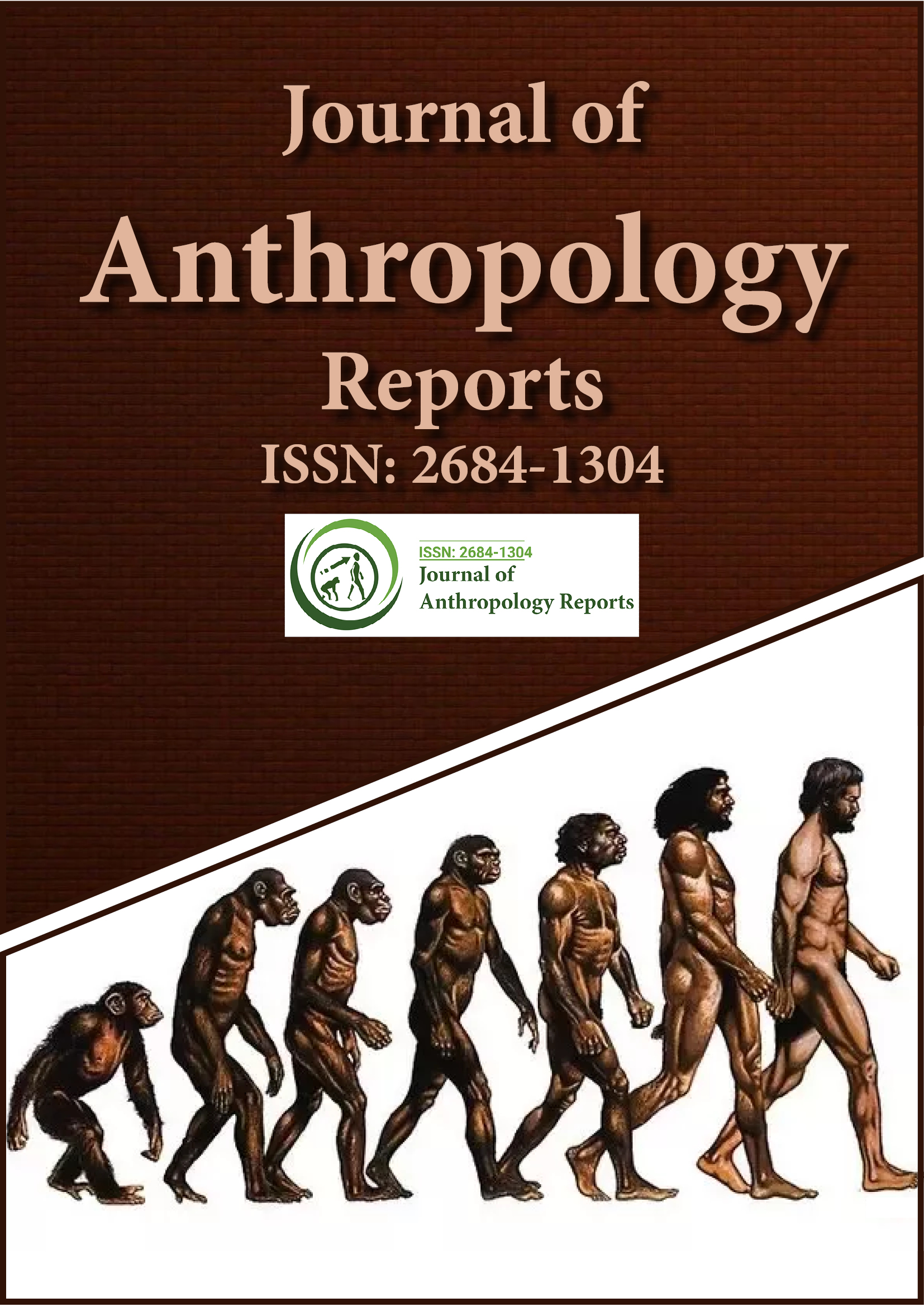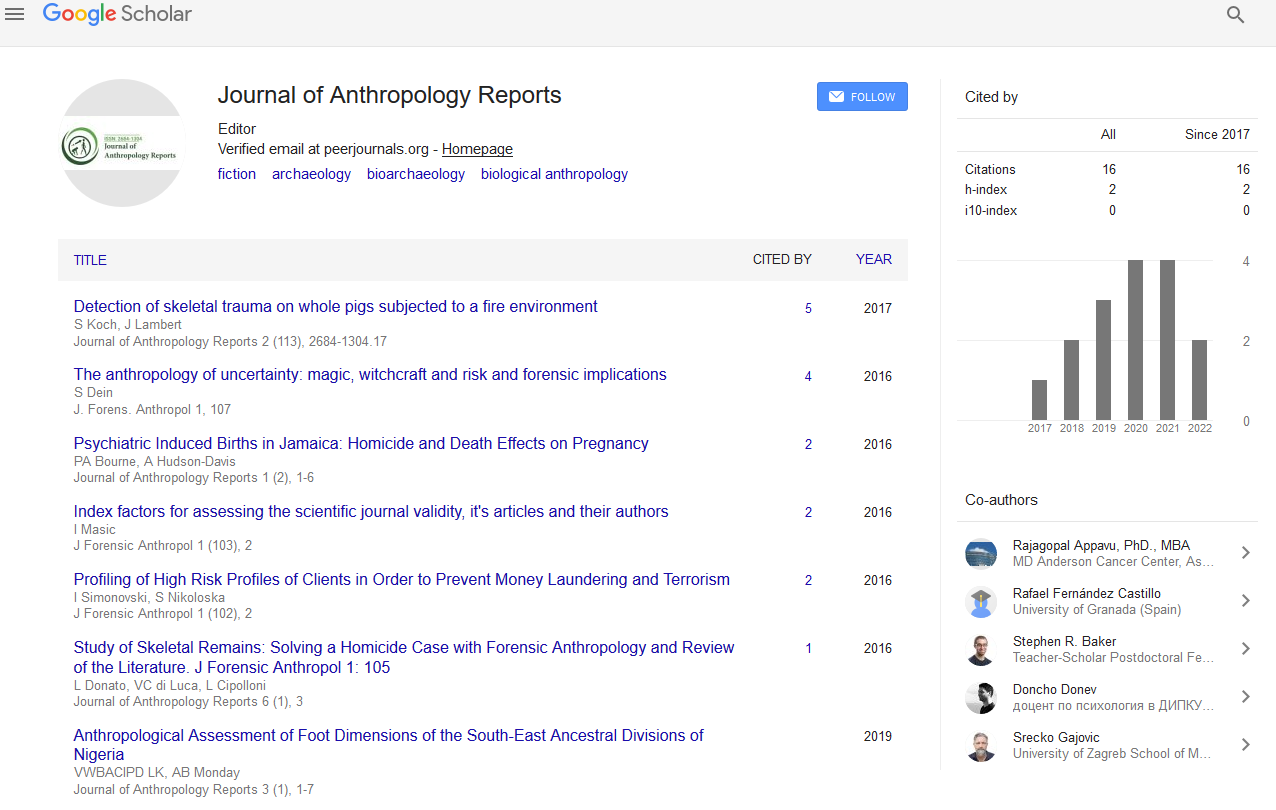Indexed In
- RefSeek
- Hamdard University
- EBSCO A-Z
Useful Links
Share This Page
Journal Flyer

Open Access Journals
- Agri and Aquaculture
- Biochemistry
- Bioinformatics & Systems Biology
- Business & Management
- Chemistry
- Clinical Sciences
- Engineering
- Food & Nutrition
- General Science
- Genetics & Molecular Biology
- Immunology & Microbiology
- Medical Sciences
- Neuroscience & Psychology
- Nursing & Health Care
- Pharmaceutical Sciences
Commentary - (2025) Volume 8, Issue 1
The Evolution of Human Social Structures: A Cross-Cultural Study
Mei Zhang*Received: 24-Feb-2025, Manuscript No. JFA-25-29398; Editor assigned: 26-Feb-2025, Pre QC No. JFA-25-29398 (PQ); Reviewed: 12-Mar-2025, QC No. JFA-25-29398; Revised: 19-Mar-2025, Manuscript No. JFA-25-29398 (R); Published: 26-Mar-2025, DOI: 10.35248/2684-1304.25.8.219
Description
Human social life has changed over thousands of years, shaped by environment, technology, beliefs and survival needs. From small family groups to modern cities, the ways people organize themselves have taken many forms. Anthropologists often study these patterns across different cultures and time periods to understand how people relate, cooperate and maintain order. These structures, while diverse, often reflect common needs such as protection, reproduction, food sharing and decision-making.
In early human communities, social life was closely tied to immediate survival. Small bands of people, often related by blood or marriage, moved across landscapes in search of food and shelter. In these groups, roles were often shared and flexible. Cooperation and mutual support were necessary and decisions were usually made through discussion or by respected elders. Leadership was based more on skill and experience than power or wealth. These small groups often showed strong bonds and a high level of daily interaction.
As humans began to settle in one place and practice farming, group size increased and social life became more complex. Larger populations required new systems of organization. Specialization of labor emerged and some individuals took on roles like tool-making, farming, or managing surplus food. These changes influenced how resources were distributed and how power was held. Hierarchies began to form and leadership roles became more formal, sometimes passed down through family lines.
Religion and belief systems also played a role in shaping group organization. In many cultures, social position was closely tied to spiritual roles. Leaders might be connected to religious authority and rules for behavior were often linked to spiritual teachings. Ceremonies, symbols and stories helped create a sense of unity and identity. These shared values helped maintain order and explain social roles.
Family remains one of the most basic building blocks of social life. However, what counts as family and how it functions varies across cultures. In some societies, extended families living together are common, while in others, nuclear families dominate. Marriage practices, inheritance rules and the roles of parents and children differ widely, influenced by economic needs, historical experiences and cultural values. These variations affect how communities function, how land and wealth are passed on and how children are raised.
Political systems also reflect changes in social structure. In small-scale societies, decisions may be made through discussion and consensus. In larger or more centralized groups, leaders or councils may have more control. Some societies developed systems of kingship, while others used councils of elders or clan leaders. These systems were shaped by local history, access to resources and external threats. Over time, many communities developed written laws and formal institutions to manage conflict and cooperation.
Trade, migration and war introduced new influences and challenged old patterns. Contact with other cultures brought new ideas, technologies and ways of living. Sometimes this led to the blending of customs or the creation of new alliances. In other cases, one group may have dominated another, forcing changes in social organization. These encounters played a major role in shaping modern societies, especially in areas where borders and ethnic groups are mixed.
Conclusion
Understanding the development of social organization through this wide lens provides insight into both the past and the present. It shows that human cooperation takes many forms and that people constantly adjust how they live together based on what they need and what they value. Each society offers its own solutions to common problems, shaped by experience, environment and imagination. Whether in small farming villages or major urban centers, people continue to find ways to live together, solve problems and build connections. These patterns may differ in their surface appearance, but they often reflect similar concerns about fairness, survival and belonging.
Citation: Zhang M (2025). The Evolution of Human Social Structures: A Cross-Cultural Study. J Anthropology Rep. 8:219
Copyright: © 2025 Zhang M. This is an open-access article distributed under the terms of the Creative Commons Attribution License, which permits unrestricted use, distribution and reproduction in any medium, provided the original author and source are credited

